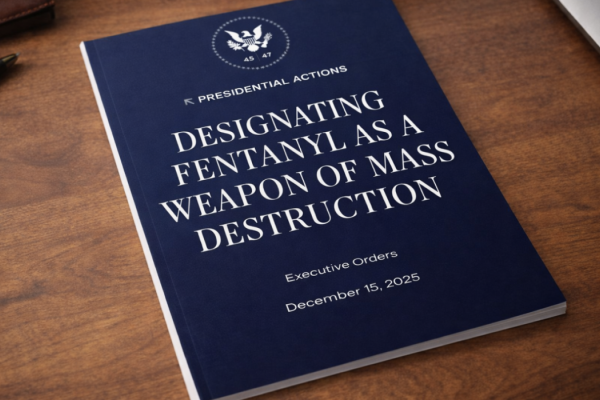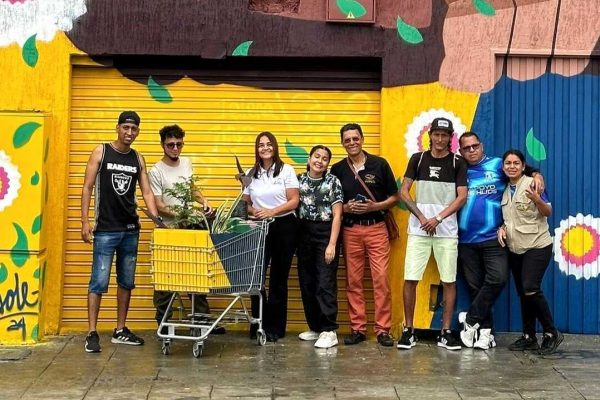11th November 2025
Transform is a proud to partner with Iniciativanegra in Brazil, and the Coalition for Environmental Justice and Drug Policy Reform on the publication of a new book; 'From Forest to Dust: Socioeconomic and Environmental impacts of the prohibition of the coca and cocaine production chain in the Amazon basin and Brazil'. You can download the book (as a free pdf) here in English, Portuguese and Spanish. Transform's Mary Ryder and Steve Rolles co-authored Section III: DESTINATIONS exploring the impacts of the rapidly evolving Brazil - Europe cocaine pipeline, and the emerging global debates on alternatives to coca/cocaine prohibition.
The Executive Summary is reproduced below
The publication From Forest to Dust presents a diagnosis with unprecedented data on the dynamics and the socioeconomic and environmental impacts of the prohibition of the coca and cocaine production chain in the Amazon Basin and in Brazil. By naming prohibition as a driver of the climate crisis, it warns of the urgency of incorporating drug policy reform and ecological harm reduction into mitigation, adaptation and territorial justice strategies.
Drug Prohibition: A System of Ecological Harm
Over the last one hundred years, the global drug prohibition regime has established an innovative, resilient, corrupt, extractivist and transnational economic system.
By criminalizing plants of traditional use and their users, prohibitionist policy ensures that the violence of repression and environmental destruction remain localized in certain territories and social groups, while financial profits circulate across borders.
It is a system that rewards logistical control, territorial monopoly and infrastructural camouflage while punishing transparency and community governance. Its intersectional effects are particularly visible in Latin America due to the geographic concentration of coca and cocaine production.
Prohibition transformed coca, a sacred Indigenous plant, into the raw material of a war economy — without ever reducing the production or use of cocaine. Instead, supply and demand continue to break historical records.
Context
Until the 1980s, it was estimated that 90% of coca leaf cultivation occurred in Peru and Bolivia, from where the pressed raw material was transported to Colombia to be refined and exported mainly to markets in the Global North.
Colombia’s strategic location as a continental crossroads, combined with smuggling networks and internal conflicts, made the country the ideal setting for the capture and industrial expansion of the cocaine production chain. The Cali and Medellín cartels built vertically integrated operations, purchasing “pasta base” (cocaine base paste) from areas controlled by Sendero Luminoso in Peru to be processed in Colombian laboratories, in a centralized, corporate and highly profitable model.
However, crop eradication policies and increased monitoring of trafficking routes led to important changes in the drug’s logistics chain. From the 1990s onward, coca leaf cultivation migrated to Colombia itself, where it grew to the point that the country became the world’s largest producer .
The dismantling of the large Colombian cartels — through killings, extraditions and seizures — did not interrupt the supply of the drug. In practice, repression fractured the high command of the production chain and redistributed authority to armed groups. In the new arrangement, guerrillas and paramilitary organizations consolidated parallel rural governance as a business strategy: by taxing farmers, regulating cultivation zones and ensuring trafficking corridors, they structurally tied the coca and cocaine economy to territorial control.
Today, practically all coca plant production is concentrated in Colombia (66%), Peru (23%) and Bolivia (11%). Despite the continuous oppression in Andean countries, agricultural productivity has
increased and the cultivation model has changed, with small-scale family farms gradually being replaced by an agro-industry capable of investing in fertilizers and pesticides.
The expansion of coca cultivation is a direct driver of deforestation in the Andean valleys and the Colombian Amazon. Forest cover loss related to coca doubled in the last decade, with annual rates above 20,000 hectares.
Balloon Effect and Brazil
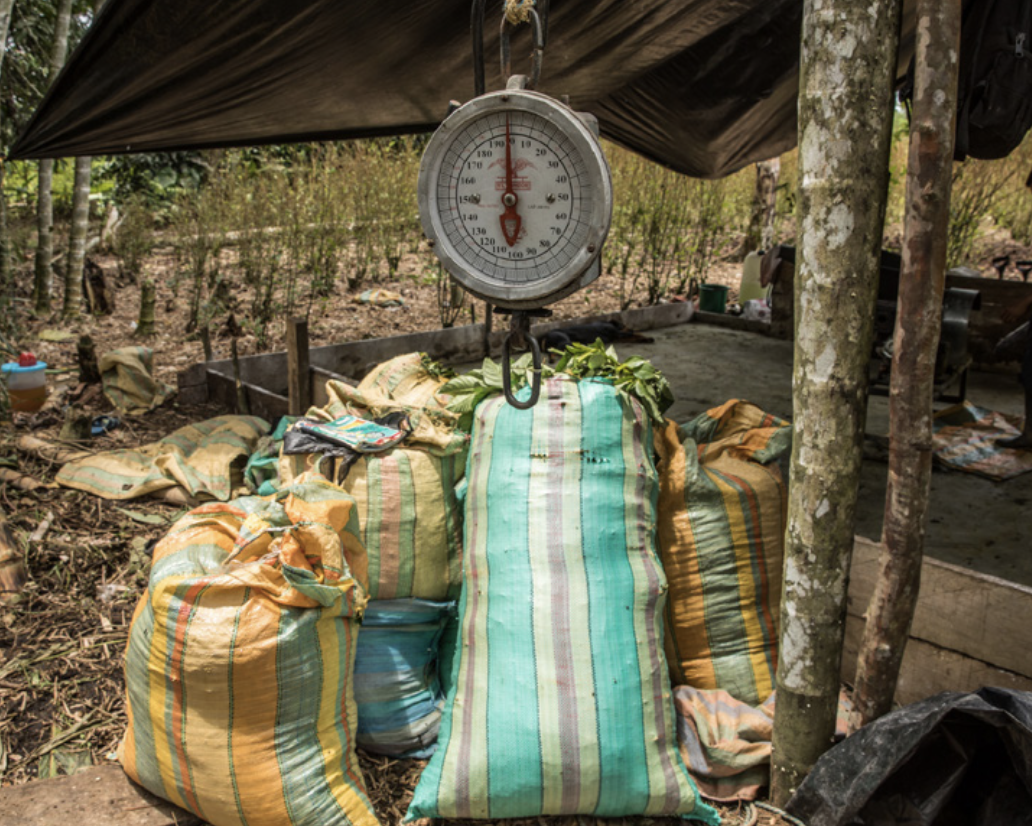
One of the main results of eradication efforts in coca-growing areas and the splintering of armed groups was the relocation of large laboratories and the increased complexity of the cocaine production chain in neighboring countries, the so-called “balloon effect” of prohibition. Although drug processing still occurs in forested regions at the Amazon triple frontier (Colombia-Peru-Brazil), and, to a lesser extent, in Bolivia, Venezuela and Paraguay, Brazil’s role as a global hub for cocaine refining and distribution has grown significantly in recent years.
A report by Fórum Brasileiro de Segurança Pública (the Brazilian Forum on Public Security - FBSP) - and Instituto Esfera published in 2024 estimates that the cocaine market generates a revenue of R$335 billion (US$65.7 billion) in Brazil, equivalent to 3.98% of the GDP.
The risk involved in transporting the drug, by itself, makes this a profitable activity, increasing the product’s price by up to 290%; however, part of the high revenue indicated by FBSP can be explained by the value added to the drug through refining and adulteration processes.
Value-chain analyses of the cocaine industry in Latin America identify significant concentration in wholesale distribution logistics, which retains about 60% of all revenue. Retail-level groups operating street sales keep around 20% of profits. In this division, transforming pasta base into cocaine base and the subsequent production of hydrochloride (powder) and crack, represent 9% of total revenue.
UNPUBLISHED DATA: Refining activity in Brazil
Despite the frequent media reports of police operations raiding “home laboratories” in urban areas and refining structures producing cocaine for export, there is no consolidated data on this activity in the country.
To begin filling this gap, the unprecedented mapping presented in this publication identified 550 laboratories for refining and/or adulteration between January 2019 and July 2025. On average, it is estimated that police seizures affect only between 10% and 20% of the global drugs market. By applying this rate to project the total number of processing structures, one can extrapolate that more than 5,000 laboratories are in operation in Brazil.
Considering the estimate that the cocaine industry generated US$65.7 billion in turnover in 2024, Brazil’s refining activity alone (9% of the value chain) could move approximately US$6 billion per year — revenue comparable to companies such as Embraer (the national leading aerospace company) and Grupo Boticário (one of the largest cosmetics Brazilian companies). The amount is also more than five times the entire US$1.05 billion target of Fundo Amazônia (Amazon Fund), the main financial mechanism to curb deforestation in the country.
Intersections
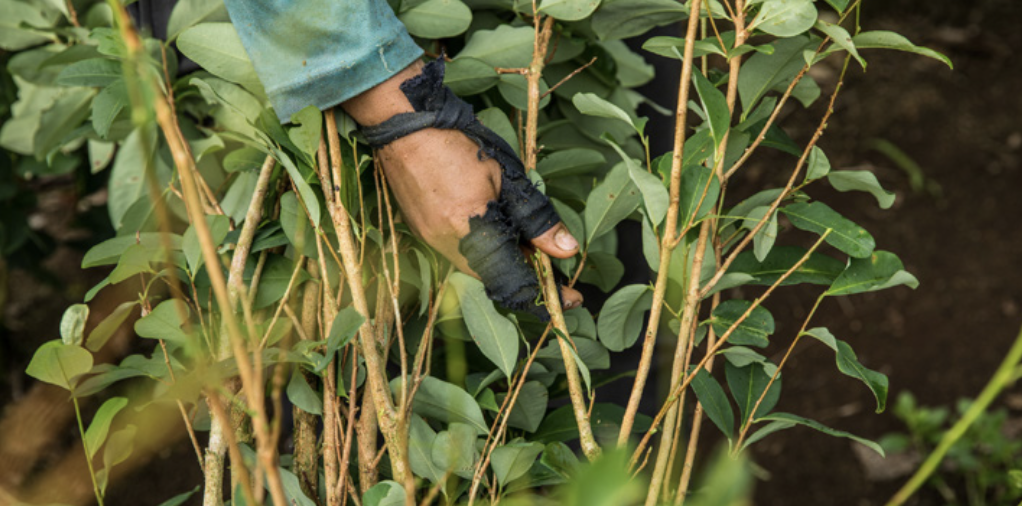
Illegal practices associated with drug prohibition and land use policies have expanded in exchange for the high socio-environmental and climate costs of deforestation. Over the past 40 years, Brazil has lost 111.7 million hectares of forest cover, which corresponds to 13% of the national territory.
The consequences of the economic power of the cocaine industry and distribution chain in Brazil are exacerbated by its strong convergence with the expansion of other licit and illicit activities. The financial, political and logistical resources of drug markets feed an extractivist model that not only launders trafficking proceeds, but also reinvests profits in the control and amplification of various chains of legal and illegal goods.
This intersection, although affecting biomes and communities across the country, is especially visible in the Brazilian Amazon, where the overlap between drug-related crimes, land grabbing, gold mining, illegal logging and fishing has led to the adoption of terms such as narco-deforestation and narco-mining. A symbiosis that is not new but that intensified during Jair Bolsonaro's government (2019–2022), with the dismantling of environmental oversight agencies, political incentives for mining and general land tenure chaos. During this period, deforestation in the Legal Amazon registered a 73% increase.
In this context, the gold economy — a fragile, polluting, exceptionally illegal and high-value-added chain — and the fraudulent appropriation and purchase of land to boost agribusiness and mining sectors, have become attractive alternatives for laundering money from drug markets. In addition to financial crimes, logistics are also integrated: roads, airstrips, means of transport and corruption schemes are shared by the multi-trafficking networks that operate in the region.
Whether by air, land or water, hundreds of tons of “pasta base” and cocaine hydrochloride are moved through the Brazilian Amazon, where seizures tripled between 2019 and 2023.
Fueled by profits from the cocaine trade, criminal organizations such as the Primeiro Comando da Capital (PCC) and Comando Vermelho (CV) actively dispute routes, often with the support of Colombian, Bolivian and Venezuelan cartels, expanding the complexity and reach of trafficking in the Amazon Basin.
Under the justification of combating this dynamic, there has been a significant increase in the militarization of the State’s presence in the Brazilian Amazon with operations conducted by the Federal Police and the Military forces. In attempting to dismantle trafficking routes, these measures reproduce the balloon effect: when one route is squeezed, the flow shifts to more remote and less monitored areas, causing geographic dispersion of criminal factions and worsening territorial conflicts.
With growing tensions among the population, organized crime and security forces, the quilombola and riverine communities, Indigenous peoples, and residents of urban favelas in Amazonian cities are disproportionately affected. These communities face constant risks of criminalization, social and economic insecurity and invasion of their territories by armed groups. The increases of 67.3% in incarceration rates and 76.7% in intentional violent death rates in the Brazilian Amazon over the past decade illustrate these impacts.
The cocaine economy goes far beyond the substance: like gold mining and other short-cycle economies, it generates territorial movements, catalyzes illegal activities, encourages predatory exploitation, facilitates corruption and promotes violence.
In cities and metropolitan areas, the phenomenon manifests starkly in the proliferation of public crack (and other drugs) use scenes among people experiencing homelessness, who are mostly victims of housing shortages and racial and gendered violence. Crack, “the rock” — in Brazil, a cheaper, lower-quality version of cocaine — is offered to users in extreme social vulnerability, in a perverse market logic that serves the financial interests of both trafficking networks and real estate speculation.
The crisis resulting from drug policies is even more evident in national public security indicators. Brazil is approaching the mark of 1 million people incarcerated, with approximately 30% convicted for drug-related crimes. The warlike practices of prohibition are also associated with high rates of homicides resulting from security forces operations: in 2024, 6,243 people were killed by police while on duty in the country.
Rising Consumption
On the demand side, the cocaine market has also shifted. According to the UNODC, the estimated number of cocaine users worldwide has increased steadily over the past 15 years. Although the United States remains the leading market, Brazil has become the second-largest global consumer. According to the National Survey on Alcohol and Drugs (LENAD), around 11.4 million Brazilians, or 6.6% of the population, have used cocaine/crack at least once in their lifetime.
In Europe, between 2005 and 2012, criminal organizations from the Balkans took control of cocaine markets in much of the continent and established direct links with Brazilian and other Latin American groups. In doing so, they verticalized supply chains, removing intermediaries, reducing wholesale costs and maintaining profit margins while offering consumers a purer and cheaper product. As a result, retail data indicate a saturated environment of accessible, higher-quality cocaine, with an upward trend in use, making the drug the second most consumed illicit substance in Europe, after cannabis.
Routes and Markets

Brazil’s extensive port, maritime and air infrastructure, combined with the adaptability of trafficking networks, contributed to the country becoming a central hub for the transatlantic cocaine economy. The Port of Santos (São Paulo) is the world’s second-largest exporter of the drug. Between 2020 and 2024, ports in Brazil’s Northeast region consolidated as important logistical corridors for shipping cocaine destined for Europe and West Africa. Meanwhile, the Brazilian Amazon configured itself as a transit area for the flow of the Andean commodity toward Atlantic ports.
Only in 2020, approximately 71 tons of cocaine linked to Brazil and destined for Europe were seized, compared with 67.5 tons from Ecuador and 32 tons from Colombia, positioning Brazil as a primary supplier of the drug to the European continent.
In West Africa, the Gulf of Guinea emerges as the main contemporary corridor for narcotrafficking. Strategic ports in Nigeria, Ghana and Côte d’Ivoire have been incorporated into logistics networks controlled by Brazilian factions in partnership with African and European criminal groups and Latin American cartels.
What the United Nations Office on Drugs and Crime (UNODC) calls the nexus between cocaine trafficking, corruption and financing of extractive industries in Latin America, also takes place in West African countries. The same corrosive dynamic that generates severe socio-environmental impacts has drug prohibition as its common denominator.
Reform: drug policies. Restore: rights. Recover: nature
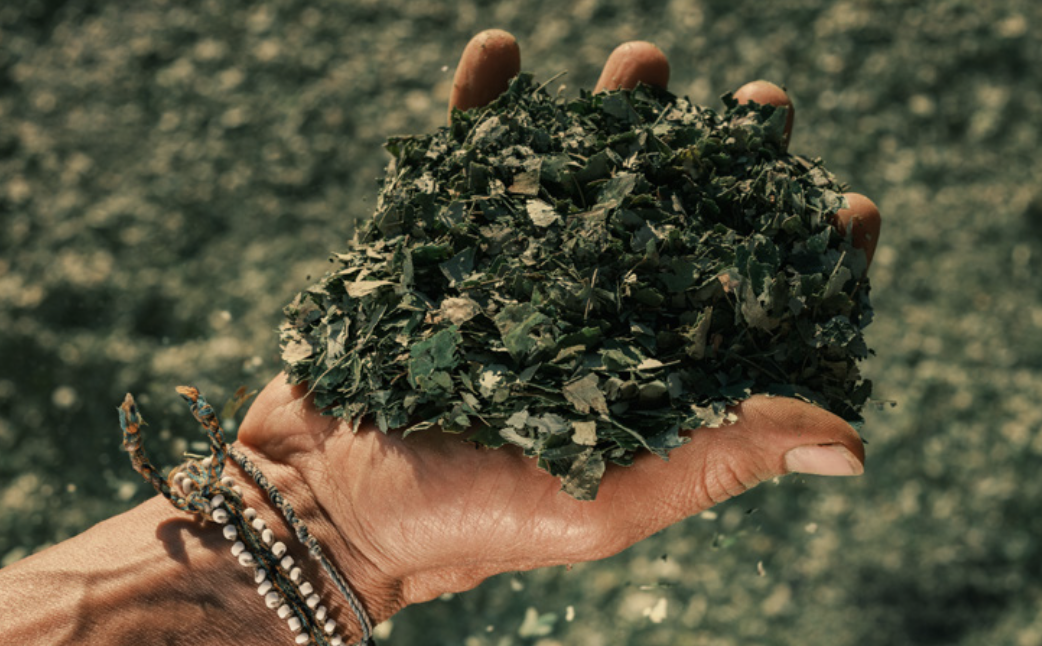
As this report describes, the overlaps between the climate crisis and the violence resulting from drug prohibition may be ignored or minimized by decision-makers and public managers, but their impacts are evident.
The criminalization of the coca plant has triggered a devastating domino effect for the countries of the Amazon Basin and Latin America, which live daily with territorial conflicts, illegal deforestation, armed violence and corruption scandals involving state agents. Recognizing prohibition as a driver of the governance crises and the climate emergency is unavoidable to prevent systemic chaos from expanding in these regions.
For Amazonian and Latin American countries to meet their national land-use greenhouse gas reduction targets, promote the transition to a low-carbon sociobioeconomy and protect their Indigenous and traditional communities, it is necessary to dismantle the criminal networks that control these territories. Without breaking the prohibitionist paradigm, this will not be possible.
In this scenario, Ecological Harm Reduction (EHR) is introduced as a concept that links drug policies to broader socio-environmental and climate objectives. EHR proposes reclassifying prohibited plants no longer as threats, but as agents of socioeconomic prosperity, racial justice and ecological balance. This shift should be led by the principles of Indigenous and community governance, restoring and protecting traditional rights to use, cultivate and commercialize this biological heritage.
When ecological rights are incorporated into economic and social reforms of drug policy, territories and people historically most affected by prohibition are decriminalized, opening the possibility to develop sustainable systems that preserve human dignity and biodiversity. A system of reparations and Buen Vivir (good living), that replaces prohibition and its extractivist bias to ensure that plants and ecosystems are protected as living entities with intrinsic value, generating development opportunities and contributing to communities resilient to the impacts of climate change.
There will be no 'zero deforestation' while there is an ongoing war against plant-based drugs.
HIGHLIGHTS:
This publication is composed of six exclusive articles produced by an international team of researchers and specialists.
I - ORIGINS
Written by researcher David Restrepo of the Centro de Estudios sobre Seguridad y Drogas (Cesed) at Universidad de los Andes (Cali, Colombia), the chapter recapitulates the Indigenous origins of the coca plant, contrasting ecological and cosmological functions with the nexus of smuggling and commodity imposed on this production chain by prohibition. By tracing the history of the cocaine economy in cultivating countries, it analyzes how armed control, market fragmentation and ecological damage became structurally interconnected. It also details the transformation of coca into “pasta base” from territorial, value-added and violence dynamics perspectives. The chapter presents Indigenous governance systems for coca cultivation that model ecological and socioeconomic transitions aligned with climate justice.
II - PATHWAYS
Chapter 1 - Timeline: Brazilian researcher Thiago Calil, psychologist and postdoctoral fellow in Human/Urban Geography (FCT/UNESP) and PhD in Global Health and Sustainability (FSP/USP), addresses the traces left by the cocaine cycle, outlining the social, environmental and health consequences of this economy in the country. From mass incarceration to police violence, through the consolidation of major routes, usage patterns, environmental impacts and legislative landmarks, as well as the birth and strengthening of major criminal factions, the text presents a timeline of the intersectional effects associated with cocaine prohibition in Brazil.
Chapter 2 - Routes: The team at Instituto Mãe Crioula (Belém, Pará/ Brazil), coordinated by researcher Aiala Couto, provides a series of maps and updated thematic analyses on cocaine transshipment and distribution routes, with a cartography of the effects of prohibition in the Amazon, in Brazil, in Latin America and worldwide. By identifying predominant trajectories, transit corridors and points of interconnection between different countries and regions, the approach makes it possible to visualize how illicit circuits are organized and operate at multiple scales.
Chapter 3 - Refining: A team from Instituto Fogo Cruzado (Rio de Janeiro, Brazil), coordinated by researcher Daniel Edler, carried out the unprecedented mapping of cocaine processing infrastructure in Brazil. In addition to responses to Freedom of Information requests to government bodies, the database was built from public digital sources reporting police actions to dismantle such equipment. The chapter presents maps and charts, categorizing the structures as refining or adulteration/augmentation and wholesale or retail, as well as a ranking by state, analyzing the geography of refining and the environmental impacts of the activity in the country.
III - DESTINATIONS
Developed by the NGO Transform Drug Policy (United Kingdom), coordinated by Steve Rolles and Mary Ryder, the chapter analyzes the growing consumer market for cocaine in Europe, detailing Brazil’s crucial role as a primary exporter and the various transatlantic trafficking routes and methods, including via West African countries. The complex alliances between Brazilian criminal organizations and European and African groups are described, as are the environmental damages and threats to governance in transit countries. The article presents the emerging debate led by European mayors on models for responsible regulation of stimulants.
IV - THE FUTURE IN A LEAF
Articulated by Maori researcher Jenna Rose Atwood (New Zealand) and specialist Clemmie James (United Kingdom), both from the International Coalition for Drug Policy Reform and Environmental Justice, with collaboration from Iniciativa Negra (Brazil), the chapter introduces the concept of Ecological Harm Reduction (EHR). In addition to systematizing premises and criteria for regulated markets of controlled substances, including measures for transition, reparation, protection of Indigenous intellectual property and territorial guarantees, the text presents various case studies of ecological best practices and traditional community governance.
Editor's Note: Researchers and specialists who contributed to this publication had full autonomy over language and investigative methodologies. Methodological notes are available in the corresponding chapters.
See report for image/artwork credits


